The USD seems to have shown some signs of stabilisation yesterday against its counterparts after a wide drop over the past two weeks, yet the bears seem to be still around. The weakening of US yields over the past few days may have been fuelling USD bears as may have comments from Fed policymakers regarding a possible pivot in the bank’s stance. Similarly, US stock markets seem to be stabilising, as they send out mixed signals, in an effort to digest the gains made over the past month. Today we expect market attention to fall on the release of the US Core PCE Price index for October, the Fed’s favourite inflation measure. Any deceleration beyond market expectations, could weaken the USD as it could solidify the view that the bank has reached its terminal rate and the next possible move would be a rate cut in the spring next year.
North of the US border we note the release of Canada’s GDP rate for Q3 and the rate is expected to accelerate beyond stagnation levels and if actually so could provide some support for the Loonie as it would signal that the Canadian economy has avoided a recession. Yet Loonie traders are also expected to keep a close eye on oil prices, especially given OPEC’s meeting today and a possible rise of oil prices could provide some support for the CAD.
USD/CAD tended to remain above the 1.3570 (S1) support line yesterday. As the pair has broken the downward trendline guiding it since the 24. of November with a steepened slope, we temporarily switch our bearish outlook in favour of a sideways motion bias. Yet the RSI indicator remains between the reading of 50 and 30, implying the presence of a residue of bearishness in the market sentiment. Should a selling interest be expressed by the market, we may see the pair breaching the 1.3570 (S1) support line and aim for the 1.3485 (S) support level. Should on the other hand the pair find extensive buying orders along its path, we may see USD/CAD aiming if not breaching the 1.3690 (R1) resistance nest.
Otros puntos destacados del día:
Today in the European session, we get Turkey’s GDP rate for Q3, France’s Final GDP rate for Q3, France’s Preliminary HICP rate for November and their Producer prices figure for October, followed by Switzerland’s KOF indicator figure, Germany’s Unemployment rate and the Eurozone’s Preliminary HICP rate all for the month of November, followed by the Eurozone’s Unemployment rate for October. We tend to expect higher volatility for EUR pairs given the high number of high-impact financial releases stemming from the Eurozone. We single out the inflation measures as well as France’s GDP rate for Q3 as key data to watch out.
On a technical level, we note that EUR/USD remained just above the 1.0960 (S1) support line. Yet the pair’s price action seems to be on a collision course with the upward trendline which has been guiding throughout the current month, threatening to break it and signal a possible interruption of the upward movement. Should the bulls maintain control over the pair’s direction, we may see it aiming for the 1.1065 (R1) resistance line. Should the bears take over, we may see the pair breaking the prementioned upward trendline, signalling an end to the upward movement, break the 1.0960 (S1) support line and aim for the 1.0835 (S2) level.
During the American session, we highlight the US Core PCE rates for October, the US weekly initial jobless claims figure and finishing off the American session is Canada’s GDP rates for Q3. In tomorrow’s Asian session, we note Australia’s Final Judo bank manufacturing PMI figure for November, Japan’s Unemployment rate for October and their Final JibunBK Manufacturing figure for November. Lastly, we note China’s Final Caixin manufacturing PMI figure for November. On a monetary note, we highlight the speeches by ECB’s Lagarde, Enria, and McCaul, New York Fed President William’s and BoE member Greene, which are all set to take place during today’s American session.
EUR/USD 4 Hour Chart
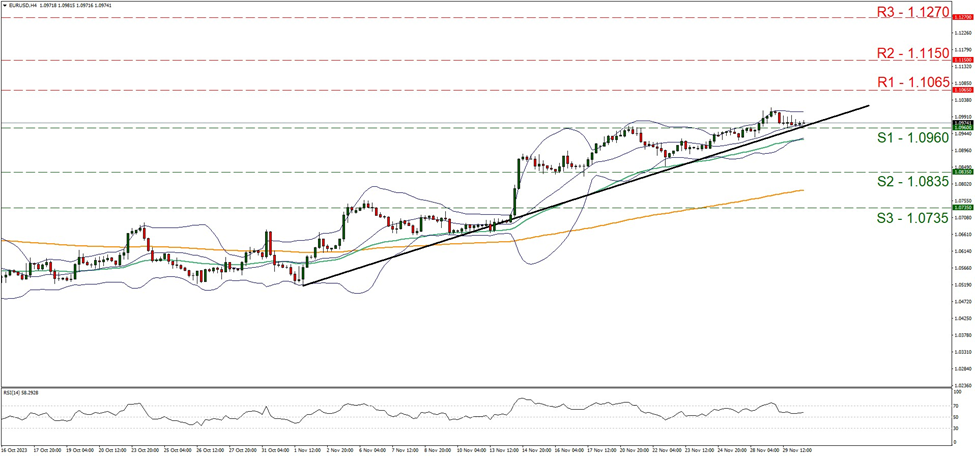
Support: 1.0960 (S1), 1.0835 (S2), 1.0735 (S3)
Resistance: 1.1065 (R1), 1.1150 (R2), 1.1270 (R3)
USD/CAD 4 Hour Chart
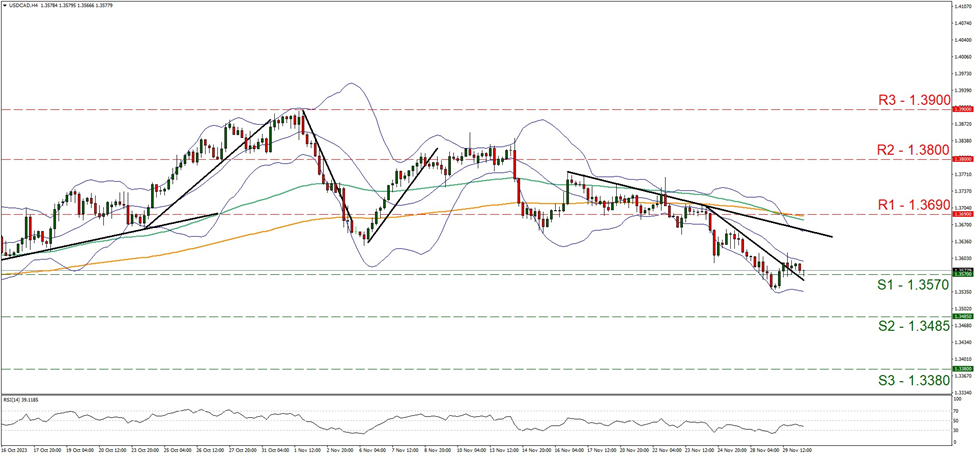
Support: 1.3570 (S1), 1.3485 (S2), 1.3380 (S3)
Resistance: 1.3690 (R1), 1.3800 (R2), 1.3900 (R3)

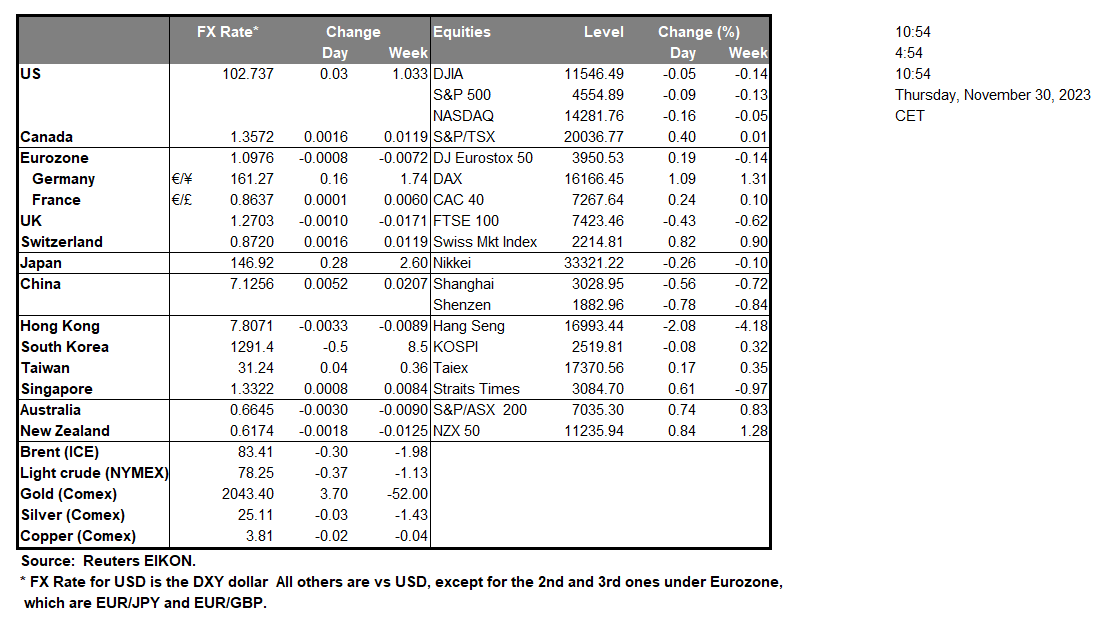
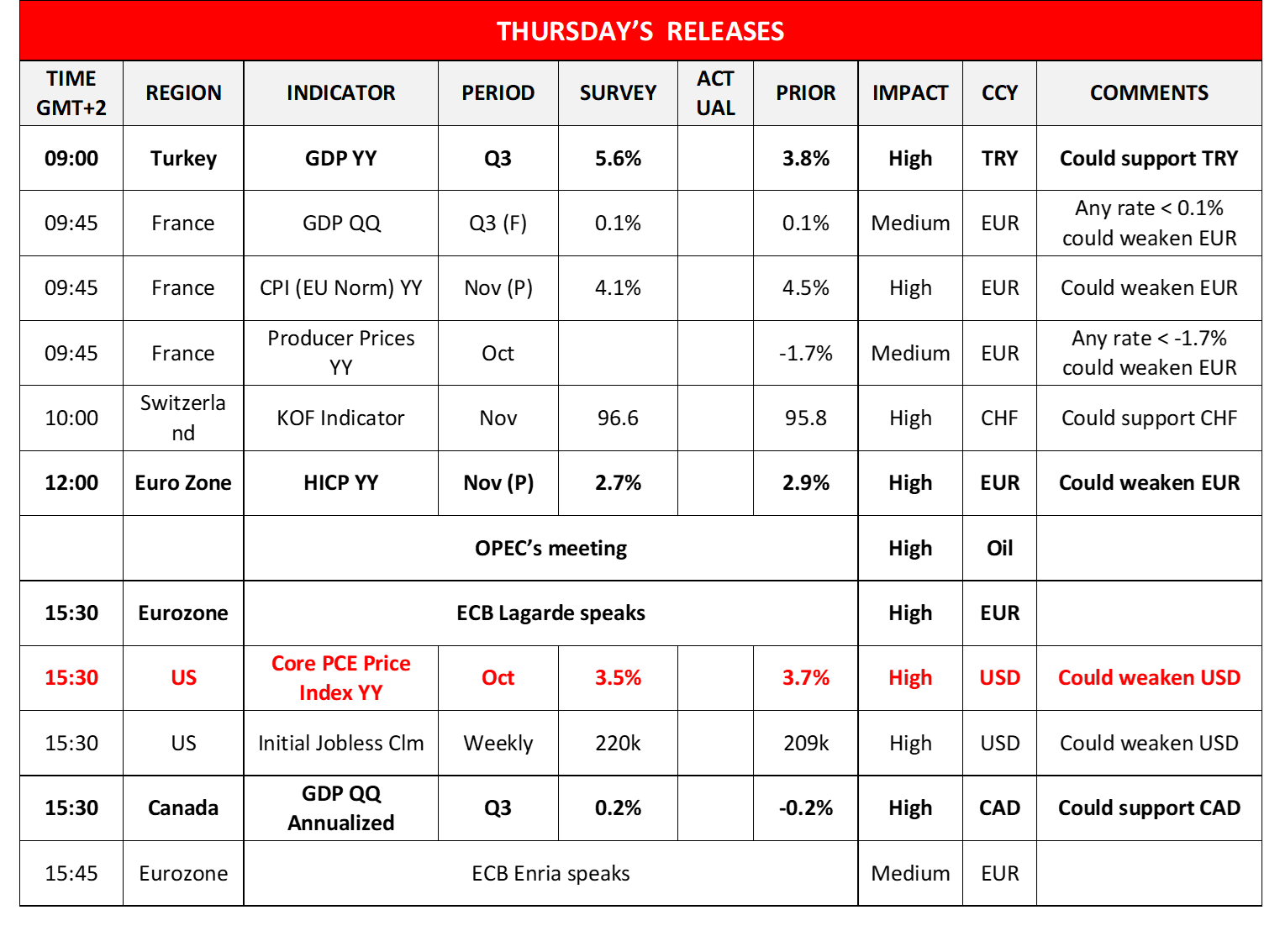
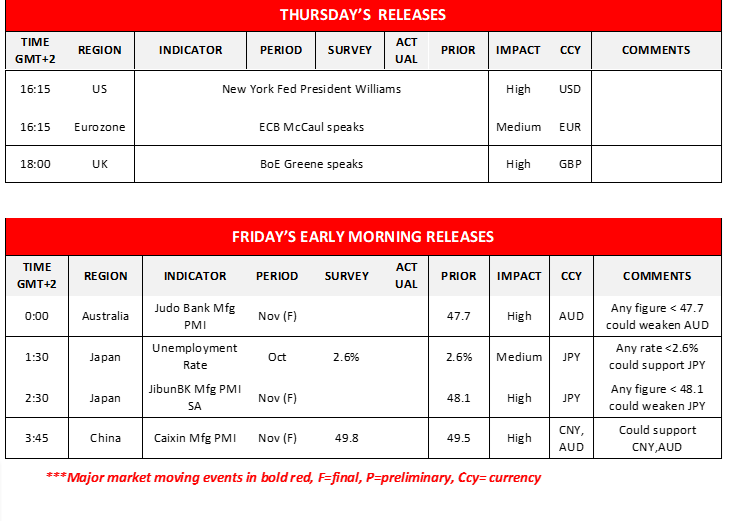
Si tiene preguntas generales o comentarios relacionados con este artículo, envíe un correo electrónico directamente a nuestro equipo de investigación a research_team@ironfx.com
Descargo de responsabilidad:
Esta información no debe considerarse asesoramiento o recomendación sobre inversiones, sino una comunicación de marketing. IronFX no se hace responsable de datos o información de terceros en esta comunicación, ya sea por referencia o enlace.













